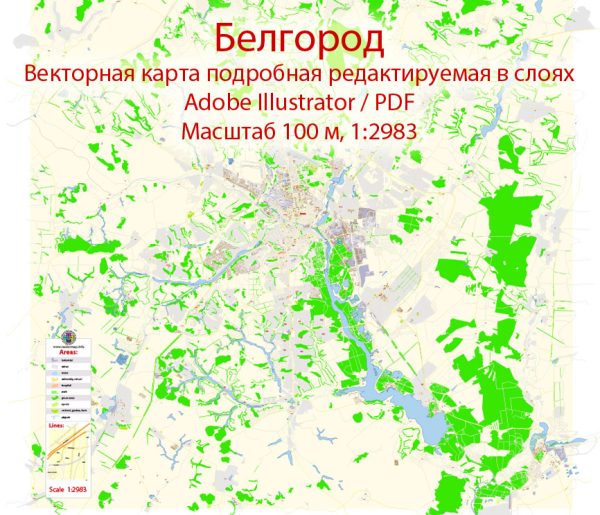Belgorod is a historic city located in southwestern Russia, near the border with Ukraine. It is the administrative center of Belgorod Oblast and has a rich history dating back several centuries. Here’s a brief description of Belgorod’s history:
- Early History: The area around Belgorod has a long history of human habitation, with archaeological evidence suggesting that it has been settled for thousands of years. In the 16th century, it was part of the Tsardom of Russia.
- Foundation and Development: Belgorod was officially founded as a fortress in 1596 during the reign of Tsar Fyodor Ioannovich. The fortress was built to defend Russia’s southern borders from frequent Tatar and Ottoman incursions. Over the years, the city grew in importance as a regional administrative and military center.
- Role in Russian History: During the 17th century, Belgorod played a role in Russia’s struggles against various neighboring states, including the Crimean Khanate and the Polish-Lithuanian Commonwealth. The city’s location near the Dnieper River made it strategically significant.
- Imperial Russia: Belgorod continued to develop during the Imperial Russian period, and it became an important transportation hub due to its location on the route connecting Moscow with the south. It was also known for its agricultural and trade activities.
- Soviet Era: The city went through significant changes during the 20th century, particularly under Soviet rule. It was a center of industrial development and modernization, and its population grew substantially. In World War II, Belgorod was occupied by German forces but was liberated by the Red Army during the Battle of Kursk in 1943.
- Contemporary Era: After the war, Belgorod continued to expand and develop, becoming a major industrial and cultural center in the region. It is known for its universities, cultural institutions, and a range of industries, including manufacturing and agriculture.
- Modern Belgorod: Today, Belgorod is a thriving city with a population of over 300,000 people. It serves as a regional administrative, cultural, and economic center. The city has a rich cultural heritage, with several museums, theaters, and historic sites for visitors to explore.
Belgorod’s history is closely tied to the larger historical events of Russia and the surrounding region. It has evolved from a fortress town into a modern city while preserving elements of its historical and cultural heritage.


 Author: Kirill Shrayber, Ph.D.
Author: Kirill Shrayber, Ph.D.